Ta Xua commune in Bac Yen district of Son La northern mountainous province has been known nationwide not only for its location of nearly 2,000 metres above the sea level, but also for its over-100- year-old Shan tuyet tea which has a specially delicious taste.
Shan tuyet tea forests in the misty, cloudy region
A friend of mine, after travelling to Ta Xua to take pictures of clouds, gave me some Shan tuyet tea as a gift. When I brewed it, I smelled a special, delicious aroma, and when drinking it, there was a sweet taste lingering in my throat.
We made a trip to Ta Xua to see Shan tuyet tea trees and to enjoy its original, special taste. This was shortly after the People’s Committee of Bac Yen district decided to grant a certificate of ownership of Ta Xua tea mark to the Northwest Tea and Special Products Company Limited (Tafood).
We arrived at Ta Xua at midnight and drank some warm, tasty Shan tuyet tea in an environment filled with mist and clouds, and that really warmed us up after a long, cold trip.
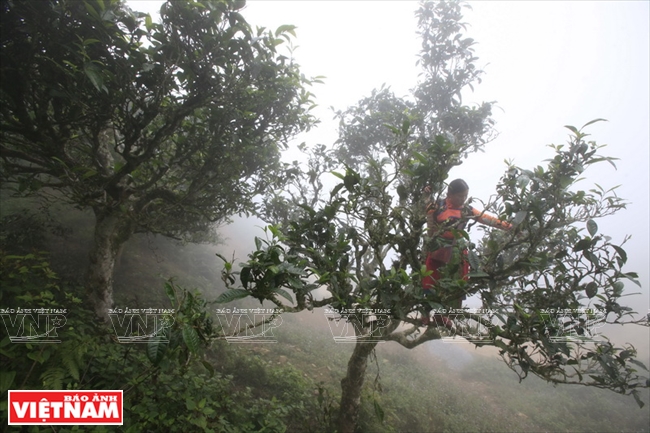
To pick Shan tuyet tea buds, MuaThi Ca has to climb up the old and tall trees and pick fresh tea buds, one by one,
and store them in a basket on her back. Photo: TrongChinh / VNP
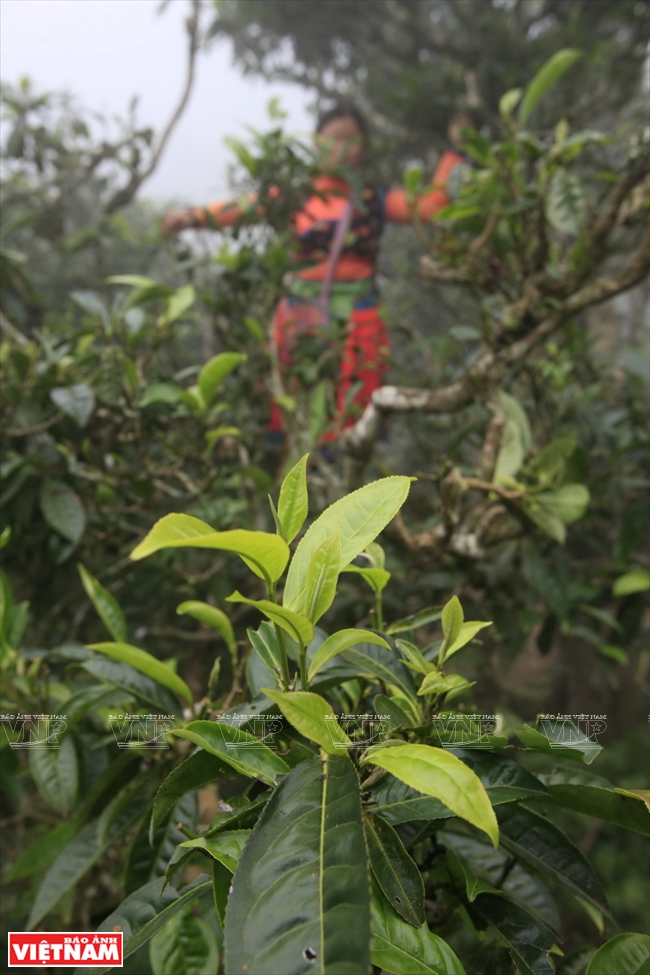
When trees produce the “one-bud-two-leaves” tea, it’s the right time to harvest tea buds,
which should be dried immediately on the same day to ensure the best quality. Photo: Trong Chinh / VNP

A Shan tuyet tea tree has a rough trunk and its bark is covered with moss and ferns.The tree, over 100 years old,
continues to produce new, fresh buds. Photo: Trong Chinh / VNP
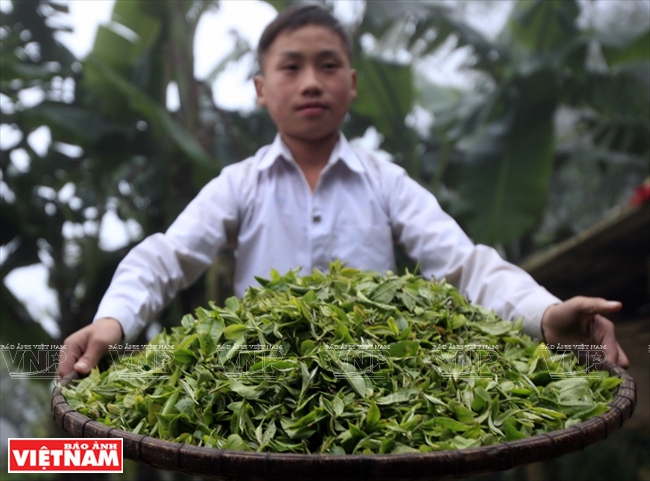
Little Mong boy Mua A Sa with fresh Shan tuyet tea buds harvested in the day.
Photo: Trong Chinh / VNP
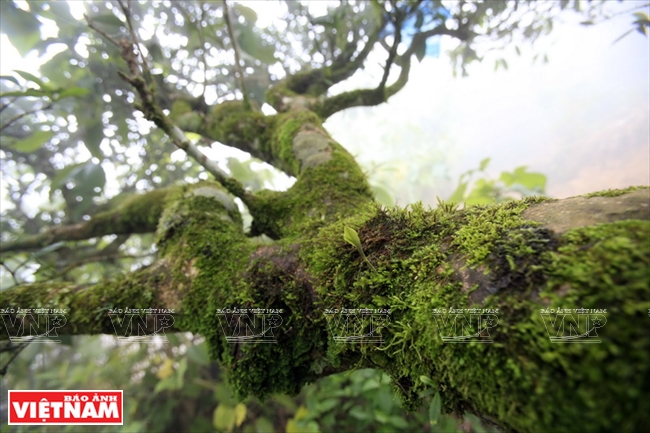
This 100-year-old tree in Be hamlet, Ta Xua commune, Bac Yen district, Son La province,
continues to produce new and fresh buds. Photo: Trong Chinh / VNP
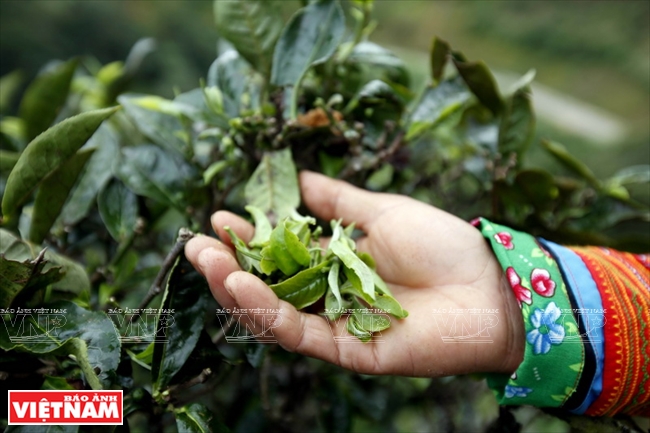
Tea buds reach the “one-bud-two-leaves” standard norms for harvest. Photo: Trong Chinh / VNP |
The following morning, we were led by Mua Thi Ca, a local Mong girl to Be hamlet, where she told us how to pick tea buds from the old Shan tuyet tea trees. We crossed slopes and narrow paths with on one side a high mountain slope and the other side a deep pass, both covered with mist and clouds.
|
According to the survey conducted by Bac Yen District’s Agriculture Department, Ta Xua Commune has 138 hectares under tea, of which 78 hectares are being harvested. A total of about 2,000 Shan tuyet tea trees over 200 years old can produce about 50 tons of tea buds per year, from which about 10 tons of dried tea is processed. |
We all burst into cries of joy when for the first time in our lives we saw the old Shan tuyet tea trees, whose trunks have gray bark and are covered with ferns. According to Ca, tea that we enjoyed the previous night was made from the fresh and green “one-bud-two-leaves” tea buds picked from those rough Shan tuyet tea branches.
Climbing up an old Shan tuyet tea branch, the girl quickly picked the tea buds while telling us the hundred-year long history about the Shan tuyet tea trees, which have grown and been closely attached to the local Mong people in her native homeland. She told us that there were many Shan tuyet tea trees over 200 years old in the location. The trees grew in the deep jungles, on the mountains, and around the hamlets.
According to Tha Van Lon, Deputy Head of Bac Yen district’s Agriculture Department, in late 2016, an extremely cold weather swept through Ta Xua area, and only the Shan tuyet tea trees, the local apple trees, and cunninghamia trees (sa mu) could survive the coldness.
Clean farm produce for domestic sale and export
Formerly, the local Mong people picked Shan tuyet tea buds and dried them into tea by hand. During the main harvest time, they could pick many tea buds, but had no facilities to protect the product, so traders used to buy their products at low prices.
“Traders only pay around 400,000 dong for one kilo of dried tea, while tea agents in Hanoi sell tea of Ta Xua brand for over 1 million dong per kilo,” said Mua Thi Ca, who added that the original source of Ta Xua tea sold in the market could not be reported exactly where it came from.
To be aware of the value of the local tea growing area, which would provide a long-term means of living for the local people in Ta Xua commune, the local authority set up a project to restore and develop Shan tuyet tea growing areas, focusing on TaXua commune.
To ensure the success of the project, the local leaders sought trade partners to invest in the project, and coordinate with the local people to implement the project.
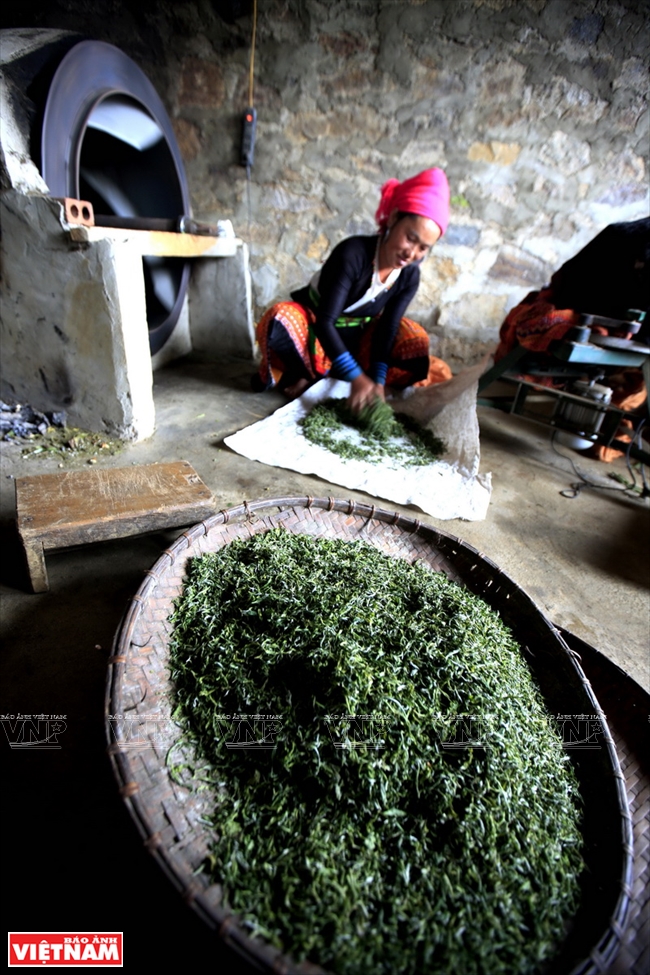
Fresh green tea buds are placed on the house floor for drying, before being processed
Photo: Trong Chinh / VNP
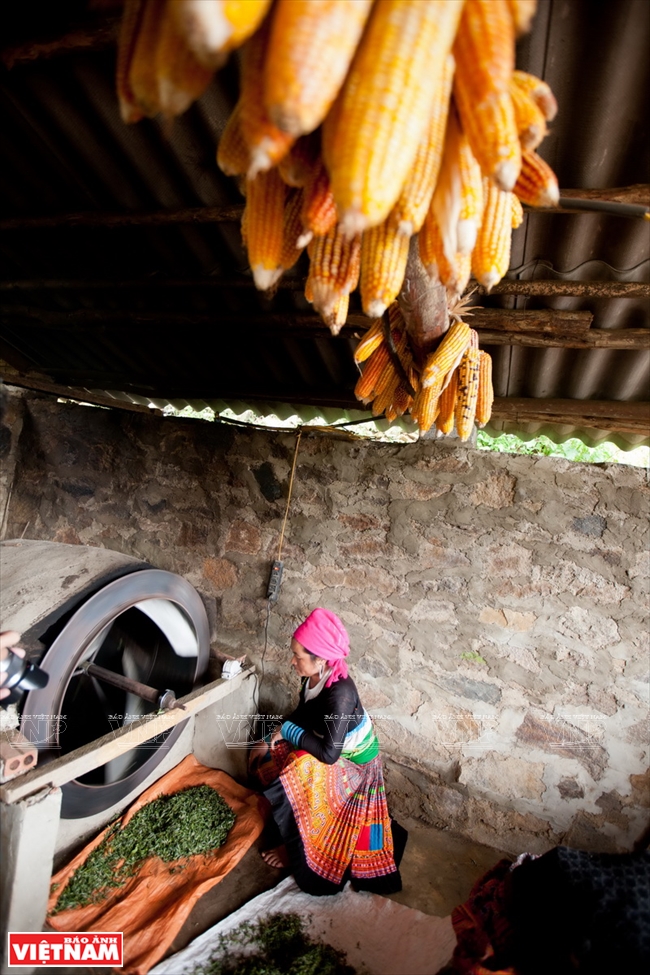
The tea buds are then dried before being packed. Photo: Trong Chinh / VNP
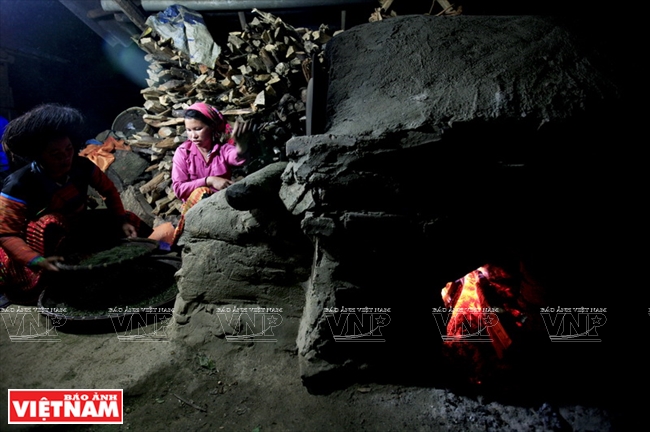
In some families, fresh tea buds are manually processed in all steps. With their skilled hands,
Mong women turn out Shan tuyet tea with a unique taste delicious to any drinker. Photo: Trong Chinh / VNP
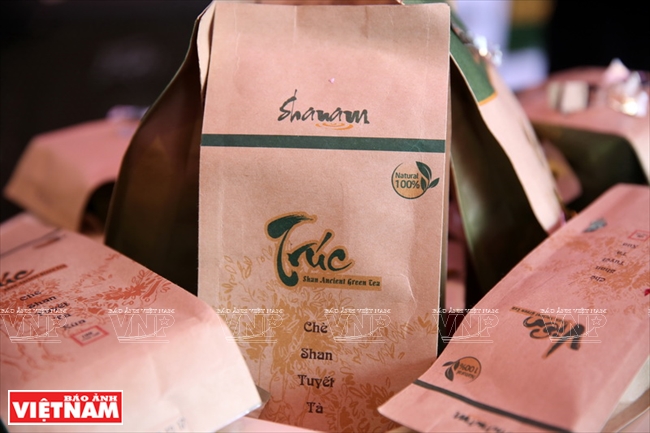
Bamboo tea-Ta Xua Shan tuyet tea of Shanam are harvested and processed with
advanced technology in combination with long-standing experience of the local Mong. Photo: Thong Thien / VNP
|
To realize the value of Shan tuyet tea from Ta Xua area, the Bac Yen district authority invited the Northwest Tea and Special Products Company Limited (Tafood) to cooperate in developing the Ta Xua Shan tuyet tea brand,” said Le Van Ky, Chairman of the Bac Yen district People’s Committee.
|
In the framework of the Culture, Sports and Tourism Festival and the Highlands Trade Fair 2017, the Bac Yen District authority on December 26 held a ceremony to grant the decision on ownership of the collective mark of Ta Xua Tea to the Northwest Tea and Special Products Company Limited (Tafood), which has purchased all products of local people in 11 hamlets of Ta Xua commune. |
Established in 2015, with the main function of developing the brands of Shan tuyet tea and other special products from the Northwest, Tafood started its operation in Ta Xua commune, where the local people had to pick tea buds during the day, and process them overnight. The local infrastructure was poor, and it was very difficult to transport tea from the highland to the low land.
Tafood had to solve those problems, first by building a factory in Ta Xua commune. It had comprehensive tea processing equipment and facilities, with advanced techniques, along with the long-standing experience in drying tea by the local Mong. Because of that, Tafood's Ta Xua Shan tuyet tea products are always of good quality, with their unique taste. The products are packed under standard norms for export, and have an expiration date of more than two years. This is superior to those processed in the traditional handy tea drying way.
At present, Tafood provides support for, and trains the local people to pick tea buds under standard norms, and sell the products at 40,000 to 60,000 dong per kilo of fresh tea buds, double the prices set in the past.
Pham Van Bach, a representative of Tafood, said: “Formerly many Vietnamese special products were used for export as they brought in high profits. But leaders of Tafood think the Vietnamese consumers have the right to buy and enjoy, and are also able to afford, special products of their native land.”
|
Products by Tafood under the brand name of Shanam, include: pill tea, bamboo tea, cloud tea, and instant tea, all made from Ta Xua Shan tuyet tea buds. The announcement of the decision on ownership of the collective mark of Ta Xua Tea is an important condition for promoting and developing the Ta Xua tea brand in the domestic and foreign markets, and for future export of the products. |
Story: Thong Thien - Photos: Trong Chinh